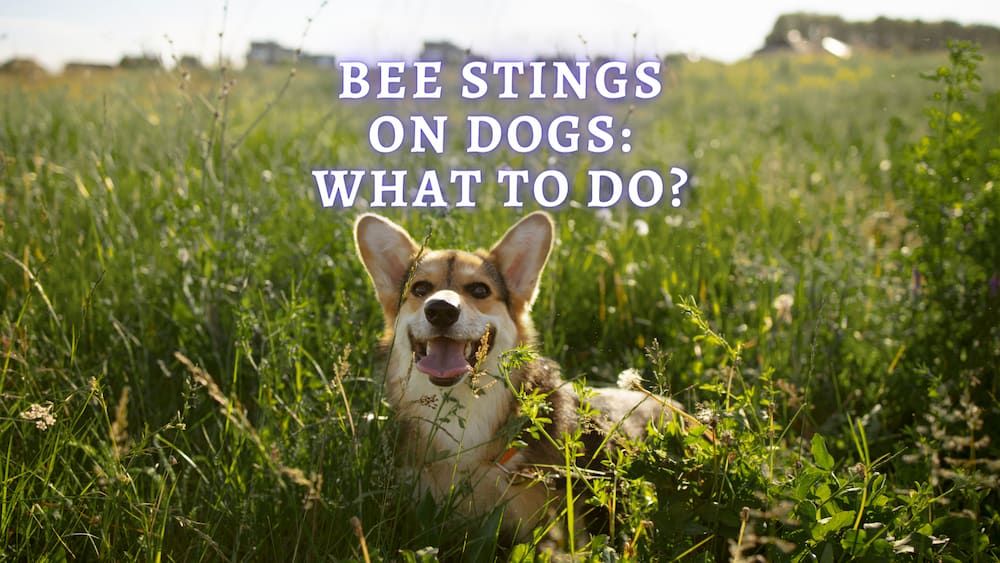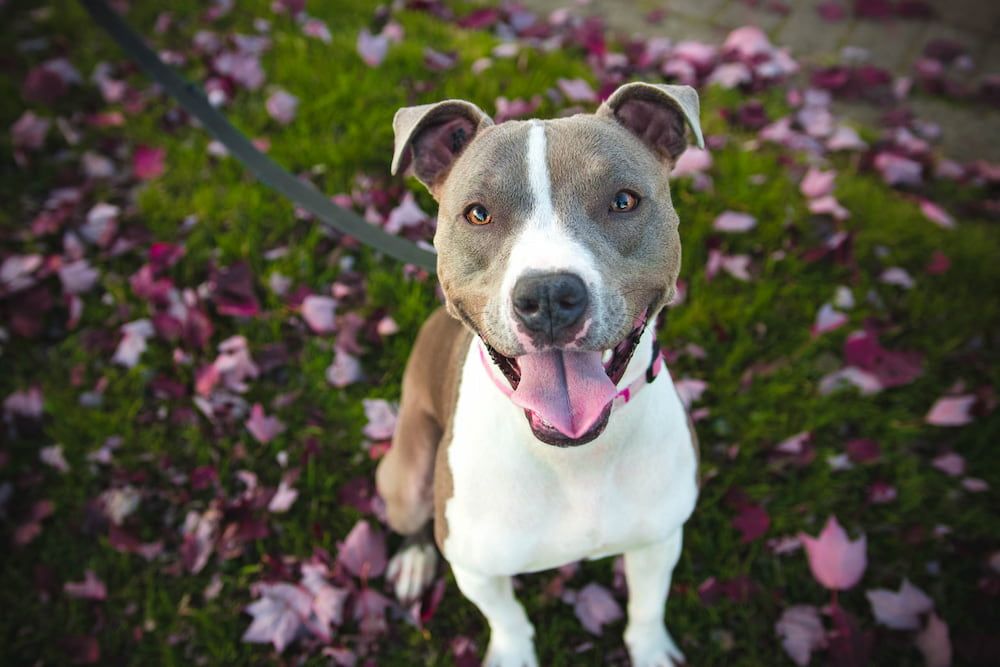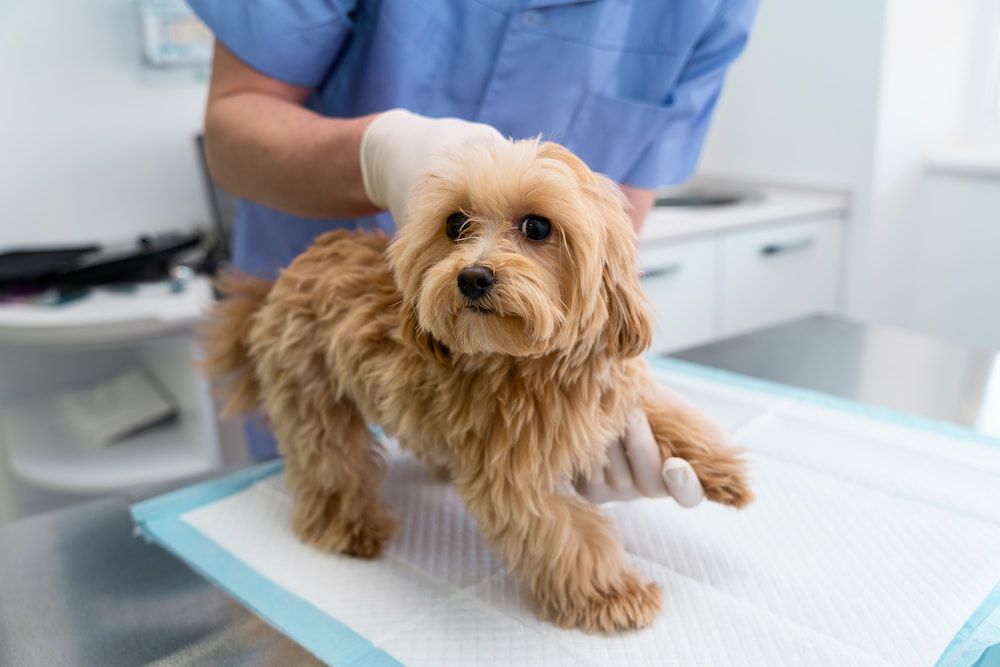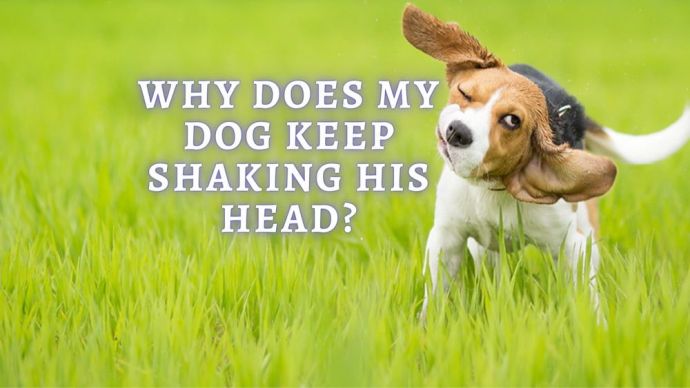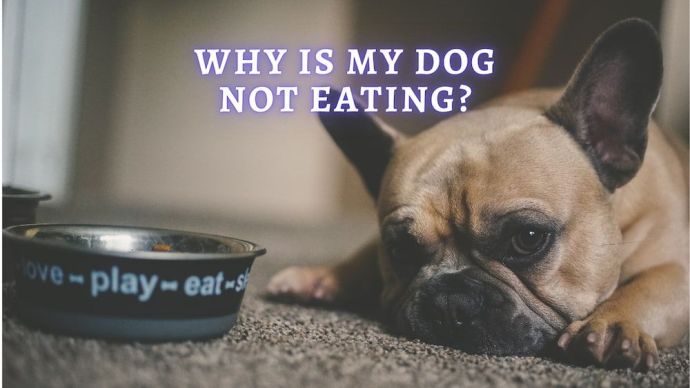Dog Stung By Bee: What To Do If Your Dog Gets Stung By A Bee? (Vet Approved Advice)
Written by:
Author: Elle Veranth
A copywriter for articles and blogs about pet care, food, beverage, and business. Has always had a passion for writing and editing, but began taking freelancing seriously fairly recently.
View all 29 articlesLearn about our editorial process and veterinary review board.
Reviewed by:
Veterinary review
by Dr. Sara Ochoa
Dr. Sara Redding Ochoa is a veterinarian with many years of experience and higher education. During her time in veterinary school she was able to learn form some of the most well-known veterinarians from all over the world. Sara lives happily with her husband Greg and her babies Ruby the schnoodle, and Bam-Bam her bunny. Dr. Sara Redding Ochoa has a passion and love for animals that makes her a wonderful asset to our team.
View all 13 articlesLearn about our veterinary review board
Viewed: 94
Updated on: 05/05/2023
Bees are an essential part of our society, but that does not mean that it is pleasant to be stung by one. Luckily, in most cases, bees will not sting unless they feel threatened or provoked. Bee stings often occur for humans, but what about our furry friends?
Bees can sting dogs, too. Like humans, our pets will have varying reactions to a bee sting, but an allergic reaction can occur. If it happens, it is important to monitor your dog’s symptoms and behavior to decide the best possible plan for treatment. So, what should you do if your dog gets stung by a bee? Read on to find out.
Signs Your Dog Has Been Stung by a Bee
If your dog gets stung, it will likely begin chewing or pawing at the sting site. For example, if your dog gets stung in the face, it might paw at it. They might begin to chew at it if they were stung in the foot. If the sting is on another part of the dog’s body, they may roll around on the ground. All of these tactics are done to relieve the discomfort that a bee sting causes. You will also likely begin to notice slight swelling. If the sting occurs on the paw, your dog may also begin limping.
What Should I Do if My Dog Has Been Stung by a Bee?
After your dog has been stung, the most important thing to do is keep a close eye on them. Do not leave them alone. It could take up to 30 minutes or more for your dog to begin showing signs of a serious reaction.
Attempt to examine your dog’s skin for the stinger. As long as the stinger is still embedded, it will continue to release venom. If you find it, use a credit card or other sturdy, flat material to flick the stinger out. Do not attempt to remove the stinger by squeezing it in any way. This could release more venom! [1] If you notice multiple stings, calling your vet might be a good idea. More stings mean more venom is being released into your dog.
Mild Reactions
Most dogs will experience a mild reaction when stung by a bee. Common signs include swelling and redness at the sting site. They may also feel itchy but try to prevent them from scratching the sting. If 30 minutes pass and your dog is not exhibiting any worrisome symptoms, it is fair to conclude that their reaction is only mild. Your pup should return to normal within a few days. Some easy home remedies can be done to help ease mild bee sting reactions.
Drug-Free, At-Home Treatments for a Bee Sting
There are a few drug-free treatments that you can do in the comfort of your own home if your dog ever gets stung. These are meant to be used to treat mild reactions and possibly some moderate ones. One idea is to use a cold compress to reduce swelling. You can use a cloth soaked in cold water, an ice pack, or a bag of frozen peas to do this. The cold compress should be applied for 10 minutes at a time.
Another idea is to let your dog relax in a soothing oatmeal bath. Oatmeal is great for the skin and helps to relieve itchiness. You can purchase oatmeal in packets to add to bathwater or simply grind up some oats you have in your pantry and add them to the water. You can also try making a thick paste made of baking soda and water to apply to the sting site. This may help to neutralize some of the itchiness. Leave this on for 15 to 20 minutes and then rinse off with warm water.
Moderate Reactions
Some dogs experience moderate reactions when stung. If this happens, you can try some of the home remedies listed in the above section. You should continue to monitor them and take note of their symptoms. A moderate reaction may cause your dog to become very itchy. If this happens, call your vet. Your vet may recommend giving your dog an over-the-counter antihistamine pill if the situation calls for it.
Should I Give My Dog Antihistamines?
You should only give your dog antihistamines if your vet says to. This is because many over-the-counter medications for humans are unsafe to take. The vet will also recommend doses for canines that are different than doses for humans, so it is important to follow their instructions.
Before recommending an oral antihistamine, your vet will ask if your dog is experiencing hives, facial swelling, vomiting, or showing signs of distress. If the answer is no to all of these symptoms, your vet may suggest an antihistamine containing diphenhydramine, such as Benadryl. This will help to alleviate your dog’s itchiness and other symptoms. Please note that your dog will likely feel drowsy after taking this medication, just like humans do.
When It’s Time for Immediate Vet Care?
Unfortunately, some dogs can experience severe reactions to a bee sting and can go into anaphylactic shock. This may not always include difficulty breathing, much like with humans. The most common symptoms that show a dog is going into anaphylactic shock are vomiting and/or diarrhea. An anaphylactic reaction is very serious and should not be ignored.
The vomiting or diarrhea will occur within just a few minutes, or sometimes up to 20 minutes, after the initial sting. It may come on more quickly if your dog was stung multiple times. Your dog may also have hives, excessive drooling, and pale gums. If these symptoms occur, take your dog to the veterinarian immediately.
Symptoms That Indicate a Severe Allergic Reaction
If your dog shows any of these symptoms after being stung by a bee, it means they are having a severe reaction to the sting. You should seek medical help immediately.
- Severe swelling around the face, head, and neck (this could limit your dog’s ability to breathe);
- Vomiting;
- Diarrhea;
- Excessive drooling (a swollen throat will cause difficulty swallowing, causing to drool excessively);
- Hives on any part of the body (the hives will look like red bumps on hairless areas or bumps on the skin that cause the hair to appear raised);
- Pale gums;
- Excessive irritability;
- Dizziness or disorientation;
- Seizures or loss of consciousness.
RELATED ARTICLE: My Dog Throws Up Once a Week (Veterinary Advice)
What if My Dog’s Swelling Won’t Go Down?
Even with mild bee sting reactions, it is very common for there to be at least some swelling. For example, if a bee stings your dog on the paw, it will swell at the site of the sting. This should go away within a few days. However, facial, head, and neck swelling should not be ignored.
If your dog swells in these areas after being stung by a bee, it indicates a severe reaction. If the swelling does not go down, bring your dog to the vet immediately. Swelling in these areas can cause trouble breathing. If your dog has severe swelling, your vet will likely administer epinephrine to help open up the airways and increase blood pressure. [1]
Your vet may also give your dog steroids to reduce inflammation and swelling. Depending on their condition, it may also be necessary to administer fluids and oxygen by IV. Your dog will need to stay at the vet’s office until they are in stable condition and their symptoms have subsided.
READ MORE: Can Dogs Eat Mint?
Preventing Your Dog from Being Stung by a Bee
Perhaps the best way to keep bee stings at bay is to implement as many preventative measures as possible. Sometimes this can be difficult to do since many dogs are very curious. Remember that these prevention ideas do not guarantee that your dog will not come in contact with bees, but they can help reduce the chances.
In most cases, bees will not sting a human or other animal unless they feel threatened. Sometimes, this happens when they are trying to protect their nest. One way to prevent your dog from getting stung by a bee is to ensure your yard and other outdoor spaces are free from bee nests. Some bees make their nests underground. If you begin to notice a congregation of bees in a specific area of your yard, keep your pets away from it. The bees will become defensive if your dog wanders over and invades their space. It might be a good idea to call a professional beekeeper to see if they can safely remove and relocate the nest.
Another idea for preventing a bee sting is to avoid outdoor areas that contain as much flowers as possible. Since bees are naturally attracted to flowers, it would not be surprising to see them buzzing around in a flowery field. Stick to outdoor areas that are grassy and flower-free.
You could also try spraying a natural bee repellent on your dog. These are very easy to make at home and do not contain any harmful chemicals. Bees hate the smell of white vinegar, so combine equal parts vinegar and distilled water in a spray bottle and spray it on your dog when you venture out into bee-infested areas. Some essential oils repel bees. However, be careful with these since not all essential oils are safe for animals. A few safe essential oils are peppermint, eucalyptus, tea tree, and clove. [2] These should always be mixed with a neutral oil, like coconut oil, before applying them. Never use undiluted essential oils on your dog. If you have any questions about using essential oils, ask a vet.
Conclusion
A bee sting is not only just unpleasant, but it can pose a serious threat to dogs that are allergic to them. If a bee sting, or multiple stings, occurs, it is important to know what to do depending on your dog’s reaction. Preventative measures can be taken, but we hope this article armed you with the knowledge you will need to be prepared to take action if your dog ever gets stung by a bee. Your pup will thank you!
Article Sources:
- Jones, Sally. “What To Do If Your Dog Gets Stung By A Bee: Treatment, Symptoms & More.” Canine Journal. 2 February 2023. https://www.caninejournal.com/dog-stung-by-bee/
- Spencer, Norma. “How to Prevent and Treat Bee Stings On Dogs.” Homes Alive Pets. 18 June 2021. https://blog.homesalive.ca/dog-blog/bee-stings-on-dogs
 Dog Care Why Do Dogs Wink? Health and Behavioral Reasons Why Do Dogs Wink At You
Dog Care Why Do Dogs Wink? Health and Behavioral Reasons Why Do Dogs Wink At You - 1019
- 0
 Dog Veterinary Tips Why is my Dog throwing up: Causes and Preventing (Veterinary Advice)
Dog Veterinary Tips Why is my Dog throwing up: Causes and Preventing (Veterinary Advice) - 23424
- 5
 Dog Care Why Is My Dog Bleeding From Its Butt? Causes and treatment of rectal bleeding in the dog
Dog Care Why Is My Dog Bleeding From Its Butt? Causes and treatment of rectal bleeding in the dog - 22076
- 0
 Dog Care My Dog Keeps Scratching His Mouth: Reasons Why Your Dog Scratching Face
Dog Care My Dog Keeps Scratching His Mouth: Reasons Why Your Dog Scratching Face - 17561
- 1









